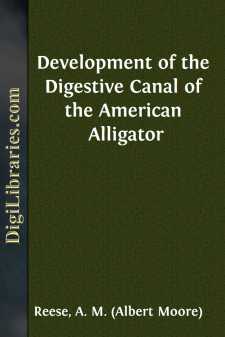Categories
- Antiques & Collectibles 13
- Architecture 36
- Art 48
- Bibles 22
- Biography & Autobiography 813
- Body, Mind & Spirit 141
- Business & Economics 28
- Children's Books 12
- Children's Fiction 9
- Computers 4
- Cooking 94
- Crafts & Hobbies 4
- Drama 346
- Education 46
- Family & Relationships 57
- Fiction 11826
- Games 19
- Gardening 17
- Health & Fitness 34
- History 1377
- House & Home 1
- Humor 147
- Juvenile Fiction 1873
- Juvenile Nonfiction 202
- Language Arts & Disciplines 88
- Law 16
- Literary Collections 686
- Literary Criticism 179
- Mathematics 13
- Medical 41
- Music 40
- Nature 179
- Non-Classifiable 1768
- Performing Arts 7
- Periodicals 1453
- Philosophy 64
- Photography 2
- Poetry 896
- Political Science 203
- Psychology 42
- Reference 154
- Religion 513
- Science 126
- Self-Help 83
- Social Science 81
- Sports & Recreation 34
- Study Aids 3
- Technology & Engineering 59
- Transportation 23
- Travel 463
- True Crime 29
Development of the Digestive Canal of the American Alligator
Categories:
Description:
Excerpt
DEVELOPMENT OF THE DIGESTIVE CANAL OF THE AMERICAN ALLIGATOR
By ALBERT M. REESE
Professor of Zoology, West Virginia University
In a previous paper (
) the writer described the general features in the development of the American Alligator; and in other papers special features were taken up in more detail.In the present paper the development of the enteron is described in detail, but the derivatives of the digestive tract (liver, pancreas, lungs, etc.) are mentioned only incidentally; the development of these latter structures may be described in a later paper.
No detailed description of the histological changes taking place during development has been attempted, though a brief description of the histology is given for each stage discussed.
The material upon which this work was done is the same as that used for the preceding researches. It was collected by the author in central Florida and southern Georgia by means of a grant from the Smithsonian Institution, for which assistance acknowledgment is herewith gratefully made.
Various methods of fixation were employed in preserving the material. In practically all cases the embryos were stained in toto with Borax Carmine and on the slide with Lyon's Blue. Transverse, sagittal, and horizontal sections were cut, their thickness varying from five to thirty microns, depending upon the size of the embryos.
The first indication of the formation of the enteron is seen in the very early embryo shown, from the dorsal aspect, in . The medullary folds and notochord are evident at this stage, but no mesoblastic somites are to be seen.
A sagittal section of approximately this stage, shown in , represents the foregut, fg, as a shallow enclosure of the anterior region of the entoderm, while the wide blastopore, blp, connects the region of the hindgut with the exterior. No sign of a tail fold being present, there is, of course, no real hindgut. The entoderm, which has the appearance of being thickened because of the fact that the notochord has not yet completely separated from it, is continuous, through the blastopore, with the ectoderm. Posterior to the blastopore the primitive streak, ps, is seen as a collection of scattered cells between the ectoderm and the entoderm, apparently formed by proliferation from the ventral side of the ectoderm.
A slightly later stage is shown in , a dorsal view of an embryo with five pairs of mesoblastic somites. A sagittal section of this stage is shown in . The foregut is here more inclosed, and the notochord, nt, having separated from the entoderm, en, is seen as a distinct layer of cells extending from the foregut to the blastopore.
A transverse section through the headfold of this stage is shown in . The foregut is seen as a wide cavity, ent, depressed dorsally, apparently, by the formation of the medullary groove and the notochord; it is wider laterally than in a dorso-ventral direction, and its walls are made up of about three layers of closely arranged, irregular cells; the wall is somewhat thinner on the dorsal side, just below the notochord....



